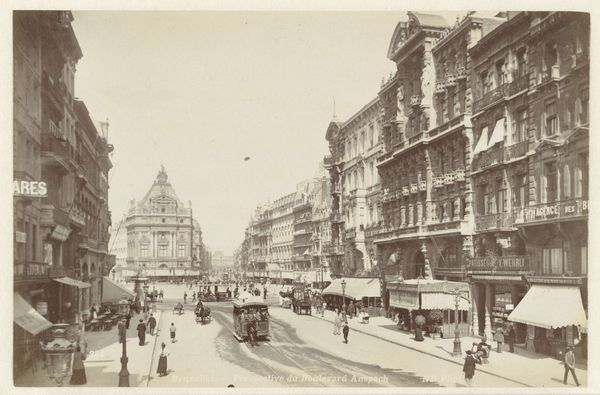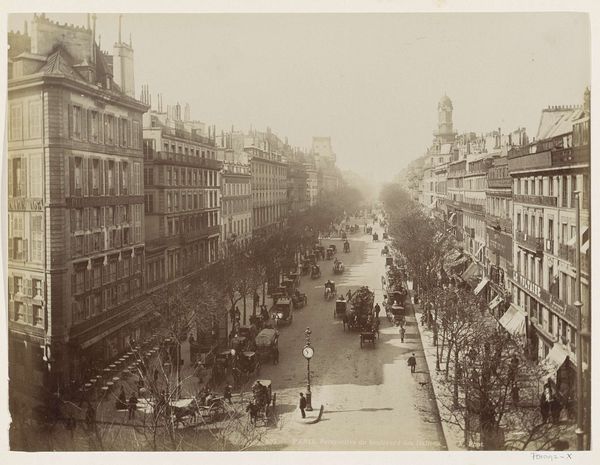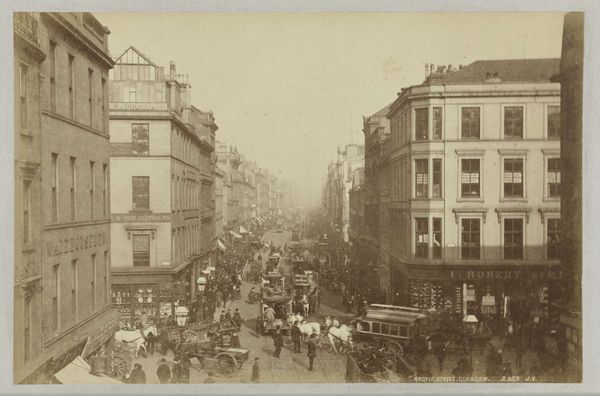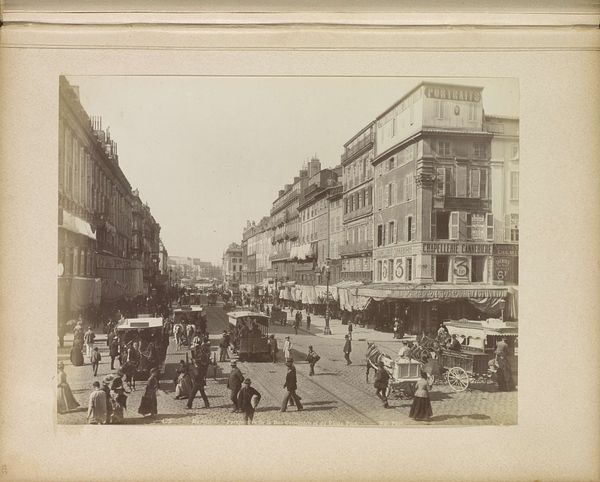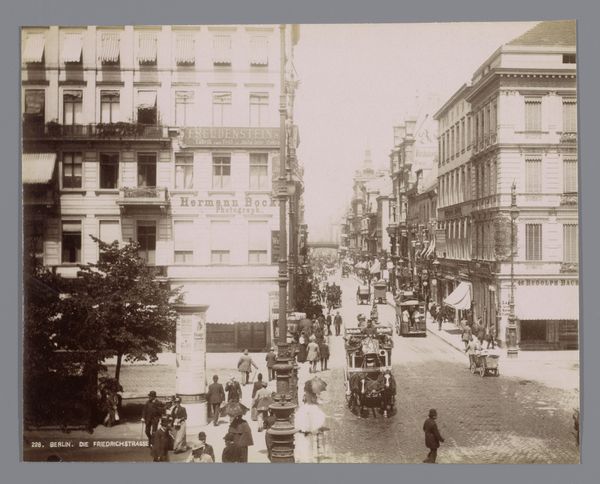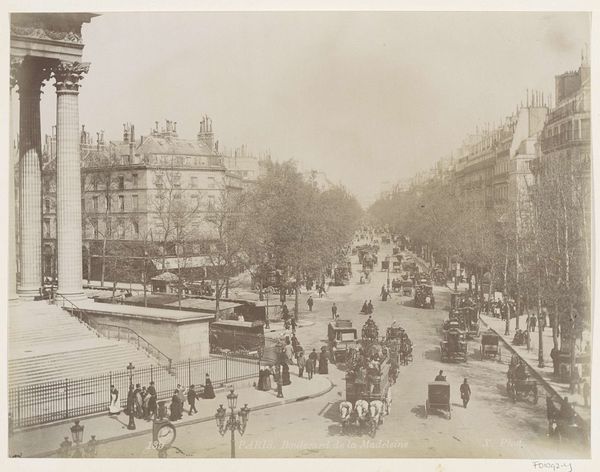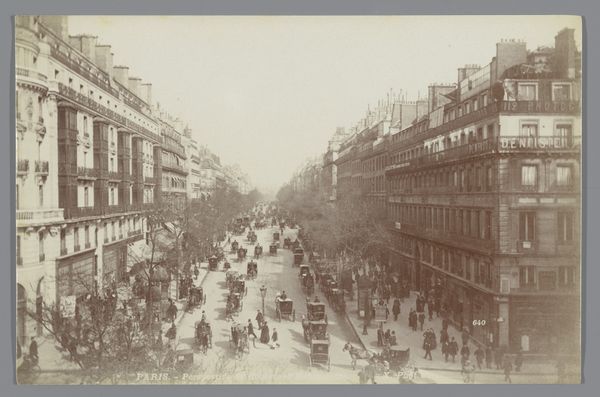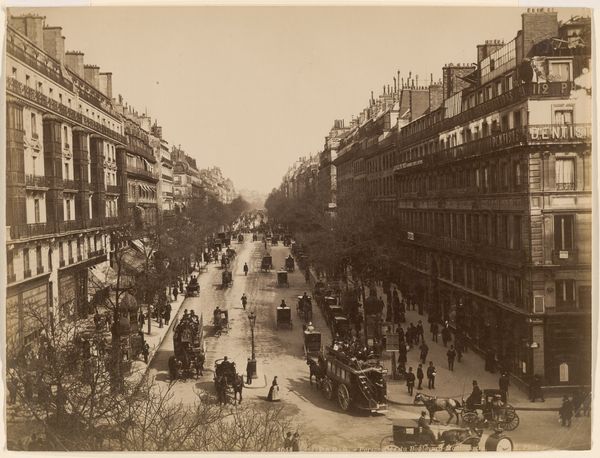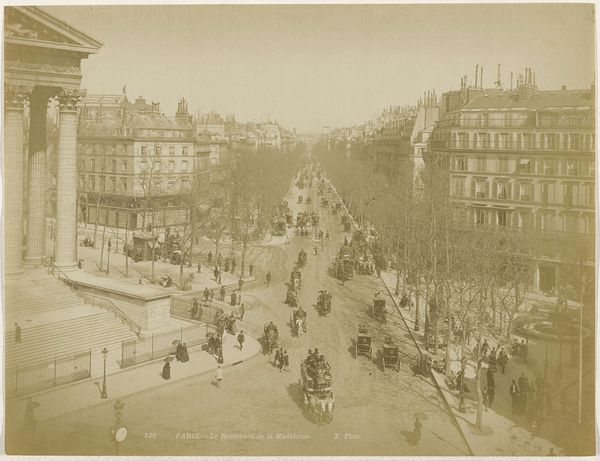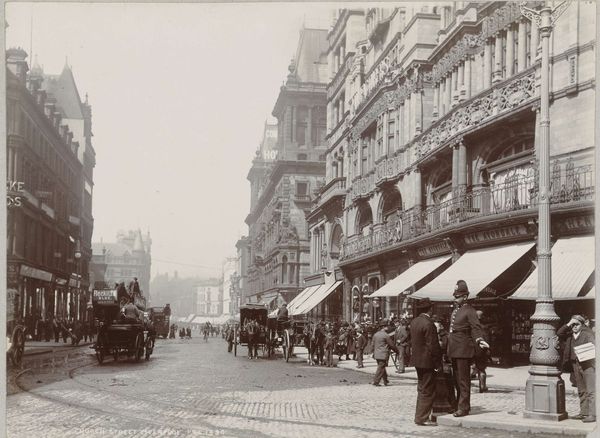
Gezicht op Der Graben in Wenen met winkels, karren, pomp en de Weense pestzuil c. 1880 - 1895
0:00
0:00
photography, albumen-print
#
street-photography
#
photography
#
historical photography
#
19th century
#
cityscape
#
albumen-print
Dimensions: height 205 mm, width 266 mm
Copyright: Rijks Museum: Open Domain
Editor: So this albumen print, captured by A. Wimmer between 1880 and 1895, gives us a ‘View of the Graben in Vienna’. It’s a bustling cityscape; I’m immediately struck by the density of people and the grandeur of the architecture. How do you interpret this photograph? Curator: I see it as a document of a specific urban experience shaped by both prosperity and anxieties. The Graben was a key public space. Note how the photograph frames the column - a visual centerpiece. Editor: The Viennese Plague Column, right? It’s so prominent, but slightly off-center. Was its placement purely aesthetic, or did it have another function? Curator: Absolutely not 'purely' aesthetic. Consider its role in shaping public memory. The monument marks the end of a plague. Its visibility here and placement at that specific position of high pedestrian traffic reinforces its purpose: it serves as a permanent, unavoidable reminder, shaping the city's identity, its relationship to its past traumas. Editor: So, even urban planning back then acted as a form of public messaging, embedding the memory of the plague into the everyday experience. What did the street look like before the plague? Curator: Indeed. The image serves as a layered artifact. Do some research on the urban redevelopment of Vienna during that period; what replaced earlier building sites, and why? Editor: That makes so much sense. I’ll definitely dig deeper into that. It's fascinating how a seemingly straightforward street scene opens up so many historical and social questions! Curator: Precisely. These images don't just show a place; they tell a story about power, memory, and public life. What do you find most compelling after thinking through the photograph’s placement and function?
Comments
No comments
Be the first to comment and join the conversation on the ultimate creative platform.
